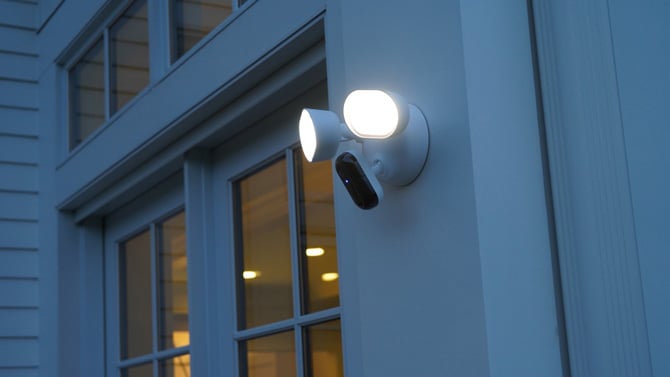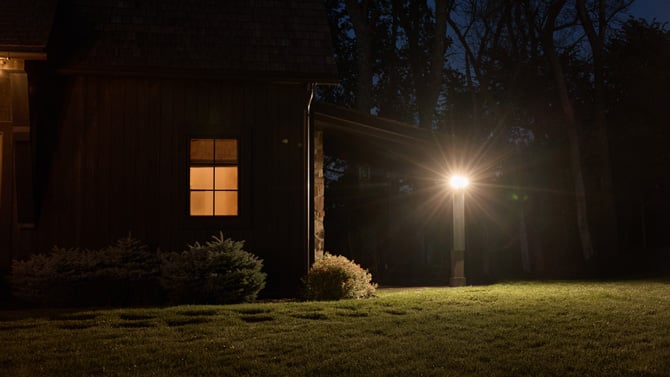Arlo has introduced its new Wired Floodlight Camera, providing a more affordable alternative to its existing wireless floodlight model. Priced at $149.99, the wired version offers continuous power through direct electrical wiring, ensuring uninterrupted performance without the need for battery maintenance. While it doesn’t bring groundbreaking innovations, it remains a strong option for existing Arlo customers or those seeking a cost-effective outdoor security solution.

Both the wired and wireless floodlight models offer 2K HDR video, giving users clear and detailed footage of their property. With a 160-degree field of view, the camera provides wide coverage, and color night vision ensures that even low-light footage captures important details, such as vehicle make or clothing color. The wired camera also features manually adjustable floodlights that produce up to 2000 lumens, with brightness customizable for different areas and lighting needs.

Power and installation: wired vs. wireless
One of the primary differences between Arlo’s wired and wireless floodlight cameras is how they are powered. The Wired Floodlight Camera connects to an existing electrical source, delivering consistent power without the need for recharging. This makes it a convenient choice for users who prefer a low-maintenance option that doesn’t require regular battery management.
In contrast, Arlo’s wireless Pro 3 Floodlight Camera is powered by a rechargeable battery, priced higher at $249.99 (currently on sale for $169.99). The wireless model offers greater flexibility in placement since it isn’t tethered to an electrical source. It can be installed in hard-to-reach areas or locations where wiring may not be feasible. Additionally, the wireless version is compatible with Arlo’s solar panel accessory, providing an environmentally friendly power solution for continuous use without needing to manually recharge the battery.
Read more: These Clever Outlet Covers & Light Switches Have Built-in Nightlights
For users deciding between the two models, the choice comes down to the trade-offs between flexibility and cost. The wired version is ideal for homeowners who don’t need the wireless functionality and want reliable power at a lower price. Meanwhile, the wireless model is suited for those who value ease of placement and are willing to pay more for the freedom to install the camera anywhere.
Arlo Secure subscription: unlocking advanced features
While a subscription is not required to view live camera feeds, both cameras gain additional functionality when paired with an Arlo Secure subscription. The service is available in three tiers:
- Arlo Secure Basic (starting at $6.67 monthly) provides 30 days of cloud video storage and lets users customize motion detection zones to reduce unnecessary alerts.
- Arlo Secure Plus (starting at $15.00 monthly) adds advanced object detection for people, animals, vehicles, and packages, ensuring notifications are more relevant.
- Arlo Secure Premium (starting at $20.83 monthly) includes 24/7 professional monitoring and emergency response, allowing users to request police, fire, or medical assistance through the app. It also offers live support from security experts.
All subscription plans have Arlo Foresight, a technology that starts video recordings four seconds before motion is detected, giving you a fuller view of the event.
The bottom line
The Arlo Wired Floodlight Camera offers a solid, cost-effective option for people who want reliable, uninterrupted outdoor security. With 2K video resolution, color night vision, and manually adjustable floodlights, it brings high-end features at a lower price compared to the wireless version. While it doesn’t introduce major innovations to the market, it provides excellent value for existing Arlo users and those looking for a dependable, lower-maintenance security solution. For homeowners interested in greater flexibility and wireless convenience, the more expensive Arlo Pro 3 Floodlight Camera may still be the better choice, but it comes at a higher cost.
[Image credit: Arlo]
For the past 20+ years, Techlicious founder Suzanne Kantra has been exploring and writing about the world’s most exciting and important science and technology issues. Prior to Techlicious, Suzanne was the Technology Editor for Martha Stewart Living Omnimedia and the Senior Technology Editor for Popular Science. Suzanne has been featured on CNN, CBS, and NBC.

















